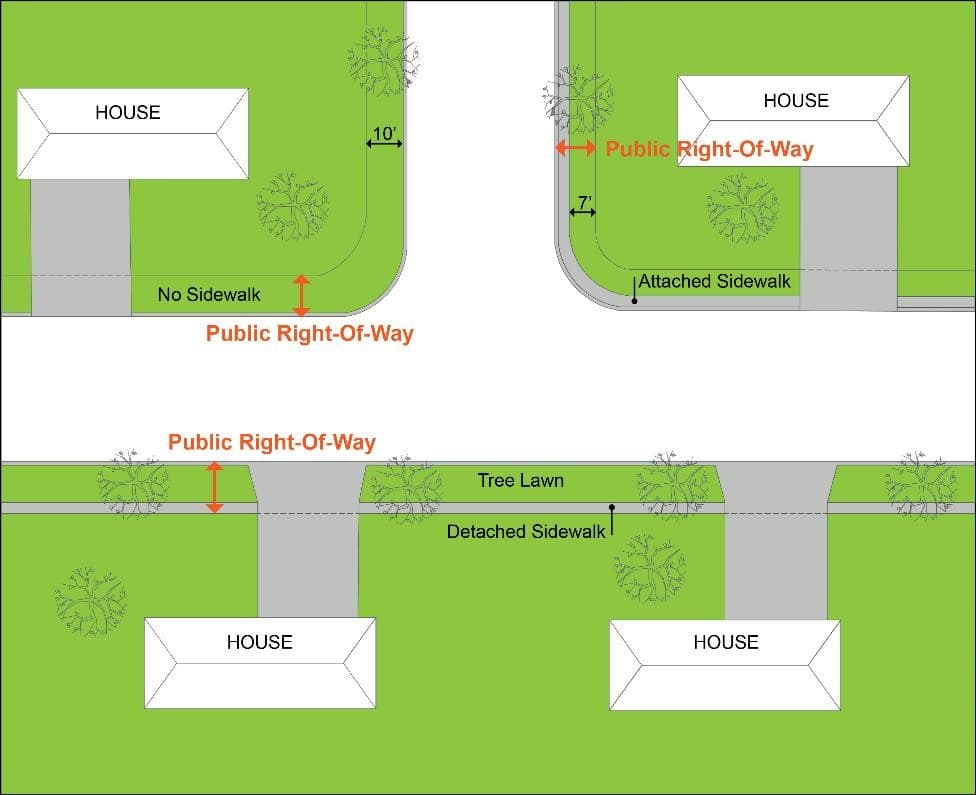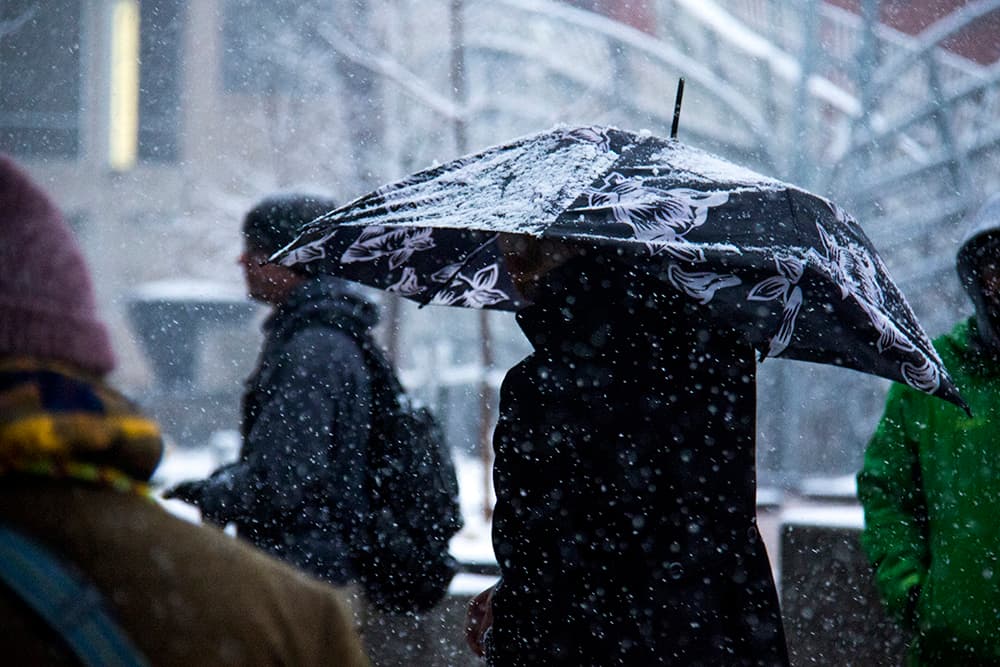
As you know, there's a potentially sizable late-spring storm ready to dump on Denver starting tonight and continuing into Saturday. The National Weather Service has issued a winter storm warning calling for 6 to 12 inches, especially on the southern end of the metro.
Given that spring bloomed so early this year, this could be rather ugly for plants, trees and power lines. Once they're weighted down with snow and greenery, those tree limbs might snap right off -- and it's going to cost you.
In this post, we'll explain who to call, what to expect and where Denver's rules came from in the first place.
Clearing snow from trees can keep them intact for longer, but you really need to ensure that the tree and the snow you're dislodging is not too close to any utility lines. Do not use a ladder or climb a tree. Do use a broom.
If branches do fall on your property, it's the responsibility of the property owner to clean up the debris. You're also responsible for debris that falls from trees in the public right-of-way around the sidewalk and the property line, even though you don't own those trees. Here's a list of tree services companies that are licensed with the city.
If branches fall onto the road, you should call 311 so that the city can get the street cleared. However, it's still going to cost you. Even if the city's trees fall from the city's right-of-way onto the city's street, it's the adjoining property owner who ultimately pays for cleanup. That's because you are responsible for maintenance of the trees in the right-of-way. Here's a helpful guide to where the right-of-way is:

If you have general questions about a right-of-way tree, email [email protected]. You can also email them with general questions about the right-of-way trees. But, remember, you still have to clean up the debris that falls -- just not the actual fixing of the tree.
Also, the sidewalks are your responsibility. You have to clear them within 24 hours, or you could get fined. Here are the rules for other cities in the metro, almost all of which have similar rules.
When you're ready to get rid of branches, you can leave up to 50 pounds of them for city trucks to pick up. The branches can't be more than 4 inches in diameter and no more than 4 feet long. You have to bundle and tie them. You can also drop them off at the Cherry Creek Recycling Drop-off center. (And 9News has an extensive list of other drop-offs in the metro.)
But why me?
Cyndi Karvaski, spokeswoman for Denver Parks and Recreation, said that the you-pay-for-everything system dates back a century to Mayor Robert Speer's administration. Speer was a proponent of the "City Beautiful" movement, which resulted in large civil works, such as Civic Center Park, as well as the planting of thousands of trees.
"It was decided that it would be not just the city’s responsibility," she said, "but the residents’ responsibility as well."
She wouldn't hazard a guess about how much homeowners should expect to pay to clear a tree. Suffice to say, this might be worth adding to the list for your emergency fund.











